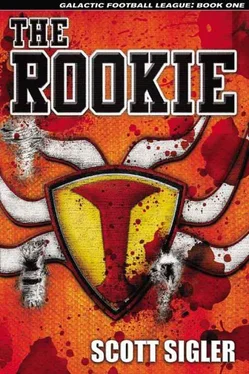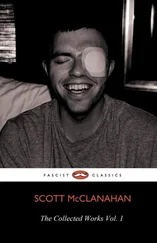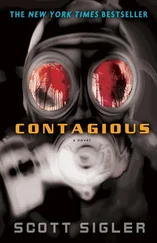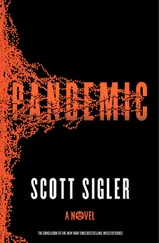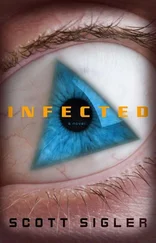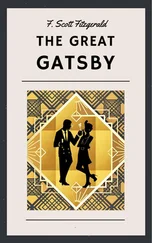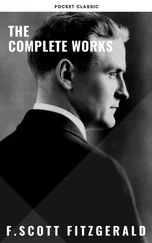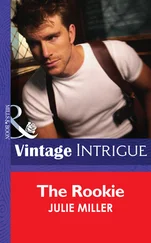[SEVEN-HUNDRED AND FORTY-THREE YEARS AGO] the computer corrected. [WOULD YOU LIKE TO SEE?]
“Yes!”
Quentin turned to the holotank. A picture flashed in the tank, but it looked very strange. He could make out football players, but they were tiny and far away, without color, and they were… flat, like a printed picture.
“What’s wrong with it? It looks broken.”
[THIS WAS CALLED ‘TELEVISION,’ A TWO-DIMENSIONAL ELECTRONIC REPRESENTATION OF ACTUAL EVENTS.]
“Do you have more of these television broadcasts?”
[GALACTIC FREE ARCHIVE HAS EVERY GAME EVER BROADCAST VIA TELEVISION, RADIO, AND HOLOCAST]
Quentin watched a play, in which the quarterback took the snap, turned almost 360 degrees and followed a wall of blockers into a wall of defenders. His heart raced — to think he was watching the beginnings of his sport, a game played almost 750 years ago! He could watch any game ever recorded, all of the To Pirates games, even games from the archaic NFL.
One of those games played now in his holotank, between teams called the “Kansas City Chiefs” and the “Chicago Bears.” He’d instructed the computer to wake him with not only music, but also a random football broadcast at least 500 years old or older.
As the music’s heavy beat pounded through his small quarters, he dragged himself out of bed and started stretching. He had plans today — he’d show them all just what kind of a player he was.
He walked through the ship’s empty corridors, descended to field level, and entered the central locker room. A circular area, the central locker room was built around a holoboard. Four doors lined the circular room. A small icon hung on each door: a Human, a Ki, a Sklorno and a Quyth Warrior. A huge, realistic mural dominated the other side of the circular room. Quentin stared at the brightly colored, six-tentacled monster rising up from the depths in a spray of deep-red water. Rows of long, backwards-curved teeth lined a cavernous mouth. One large eye glowed an eerie green. He nodded to the picture.
He entered the Human door and found his own space.
Barnes, #10 it read above the locker.
Get used to that number, galaxy. You’re going to be hearing it a lot.
He opened the locker. The first thing he took out was his practice jersey. He stared at the number “10” on the chest. He felt the texture of the black Kevlar fabric. This was only a practice jersey, yet it was of a far higher quality than anything he’d worn in the PNFL.
He set the jersey flat on the ground.
He smiled as he pulled out a Kool Products body-control suit, designed to regulate his temperature on the field. Coolant fluid constantly circulated through microtubules in the suit’s thin, rubbery fabric. He slid into the suit, which automatically adjusted itself to conform perfectly to his body.
Next he pulled out his arm-and-shoulder armor. Rawlings Null-Contact™ inertia-dampening system. State of the art. Supposedly the armor could stop a bullet, absorbing the velocity into the hard shell instead of transmitting it to the wearer.
He slid them on. Like the Kool suit, the armor’s micro-sensor circuits automatically adjusted for a tailored fit. The armor was thinner on his left arm, his throwing arm, to allow maximum flexibility.
Next came the matching lower-torso armor, which would protect his ribs, stomach, kidneys and lower back. He wrapped it around his waist — the micro-sensors contracted and expanded, locking it in precisely with the shoulder armor.
Groin and leg armor were more of the same. The knee joints were made of an interstellar-caliber alloy, designed to allow normal flexibility but locking out any possible hyperextension. He slid his feet into the armored boots, which locked in perfectly with the leg armor.
With all this protection, it seemed a wonder that any being got hurt at all. And yet they did get hurt — frequently, and badly. Football players were just too big, too strong, too fast and too violent. Quentin wondered what kind of injuries might occur were it not for this high-tech armor.
He moved around, feeling the armor move with him, a perfect fit that didn’t seem to hinder his range of motion. He pulled on the jersey, then grabbed his helmet. The shiny black Riddell helmet was lighter than anything he’d used before, but probably ten times stronger than what he’d worn on Micovi. A patch of bright orange decorated the front of the helmet, from temple to temple. Six white stripes stretched out from the orange patch, like the arms of a stylized sunrise. There were three white stripes on each side: one curving above the ear hole, one halfway up the curving side, and one higher up on each side of the helmet’s center. The stripes represented the six tentacles of the Quyth creature for which the Krakens were named.
A recessed button sat under the right ear-hole. Quentin pushed it: a holographic test pattern hovered just in front of the facemask. Once again, state of the art — he’d tried to talk Stedmar into springing for the in-helmet holo display, but Stedmar balked at the half-million credit price tag. The display would let a quarterback see the playbook, live statistics, and the coach in case coaches used hand signals, lip-reading or some other secretive play calling method. He pushed the button again and the test pattern disappeared.
Quentin headed for the sim-room, cleats clacking against the metal floor. The lights blinked on as he walked in. As he’d suspected, the place was empty. Everyone else was still sleeping.
“Ship,” Quentin called as he walked to the center of the room. “Do you have a sim for the Krakens’ practice field?”
The dome flickered briefly, then Quentin found himself in a dead-on simulacrum of the practice field.
“Ship, give me first-string defense for the Grontak Hydras.”
The semi translucent players appeared out of nowhere, a combination of Human and other species, all dressed in the red-and-yellow checkerboard Hydra jerseys.
“Ship, call out the names of each defensive player before each play. Give me X-right formation, double-streak left, Y-right.”
Krakens players materialized. The Ki linemen scurried up to the line and lowered themselves for the snap. The computer started calling out the names of the defense as Quentin approached the line. He’d practice and study at the same time, and would show them all what the Purist Nation had to offer.
• • •
THE 7 A.M. POSITION MEETING didn’t take more than ten minutes, just enough time for Hokor to outline the day’s practice. They would focus on route passing: no offensive line and no defense. The three quarterbacks walked to the lift.
In the center of the field stood seven Sklorno receivers dressed in orange practice jerseys. Sklorno’s orange leg armor was thin and light so as not to hamper their speed. For the upper body, they wore a black, metal-mesh armor that protected but also allowed for the full range of motion needed by boneless tentacles and the flexible eyestalks. The black helmet with the orange patch and the white stripes looked like a small bowling ball, with four finger-holes on top, one for each armored eyestalk, and a gap in front that let their raspers hang free.
Even before the lift reached the field, the Sklorno looked up at the oncoming Humans and began to visibly tremble.
Their raspers rolled out, almost to the ground, and each of them began to shout various Sklorno words, all of which sounded like gibberish.
“What’s their problem?” Quentin asked. “They afraid of Coach or something?”
Pine shook his head, and Yitzhak laughed.
“Not exactly,” Yitzhak said. “The Righteous Brother Pine here is somewhat of a religious figure in the Sklorno culture.”
Читать дальше
